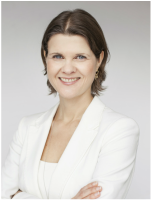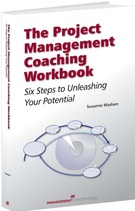Have a look at the cartoon below. Many of us have seen it before but we still seem to fall into the trap. We struggle to deliver what the customer wants and fail to give them what they really need.
But as illustrated in the above cartoon, the biggest challenge is not necessarily understanding and delivering what our customers want but rather what they really need. The goal of any project is to solve the root cause of the customer’s problem in an elegant, cost-effective and usable manner – and to provide a solution which is far superior to what they have today. Our projects have to add the maximum amount of value; something which is only possible if we look beyond our customers’immediate requirements and fully understand their pain points and how they translate to tangible and measurable business benefits. We have to get away from the mentality of delivering to a user specification without validating it or questioning it.
On our road to improving project execution and deliver real value to our clients, we must avoid the following pitfalls:
1. Lack of business awareness
One of the biggest mistakes we make when delivering what our customer’s want rather than need is that we fail to understand the business context of our projects. Project mangers don’t study their client’s core business processes or question the project’s business case. They don’t have a good view of the project’s real objectives and how they can help their customer to grow their business, improve productivity, reduce cost, comply with rules and regulation, improve safety, or whatever the ultimate business benefits are. We need to get better at understanding what our customers and end users are trying to do on a daily basis so that we can help them do it even better.
2. Lack of thoroughness
When working to deliver a product, which genuinely will help our clients to do a better job, we need to understand in detail what the business processes are that we need to emulate or improve. Project teams often make the mistake of not going into enough detail with their analysis. Their descriptions become too generic, contain assumptions or genuinely don’t consider corner cases or end-to-end processes. To identify and map out the client’s needs all situations must to be thought through and analysed. Thorough analysis, of course, requires a good understanding of the business context which brings us back to the first point above.
3. Dismissing the need for a business analyst
Some organisations don’t see the value of good quality business analysts and therefore refrain from hiring them. They either expect the project manager or team leads to identify and gather the requirements, or they rely on the customer to deliver them. The problem is that these groups are unlikely to be adequately trained (or have the time) to analyse, understand and put forward the most suited requirements. Good business analysts with in depth domain knowledge should work alongside the project manager and end users to help explore what it is that needs to be delivered so that the clients’ needs can be met and possibly even exceeded.
4. Not consulting the end users
Leaving requirements gathering solely to the customer and end users can be dangerous, but not consulting them enough is equally dangerous. We sometimes assume that we know more about our clients’ needs than we really do, and that leads us to developing a product in isolation without regularly checking back with them. Gathering requirements and translating them into the best possible solution is a dynamic process which should be explored and refined through a feedback loop of prototyping, demos and walkthroughs with the end users. This feedback is an excellent way of eliciting the user’s real needs.
5. Valuing speed of delivery over quality
When organisations and teams are too focused on delivering a speedy solution at low cost, it can be at the expense of quality. What sometimes happens is that change requests aren’t being allowed, proper analysis and design is not carried out, prototyping and demonstrations are omitted and testing is compromised. The project becomes a tick boxing exercise rather than ensuring that a quality product is being delivered. Elegant solutions which provide the customer with real benefit and ingenious design require time, effort, and the right kind of skill.
If you liked this post, you may also like:
Top Tips for Gathering Requirements
Risk management is how adults manage projects!
10 guidelines for estimating project effort
How to avoid the perception of failure









 RSS Feed
RSS Feed